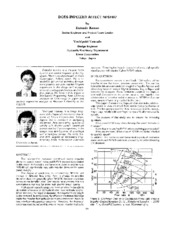| dc.contributor.other | International Pump Users Symposium (1st : 1984) | |
| dc.creator | Konno, Daisuke | |
| dc.creator | Yamada, Yoshiyuki | |
| dc.date.accessioned | 2017-10-05T22:51:52Z | |
| dc.date.available | 2017-10-05T22:51:52Z | |
| dc.date.issued | 1984 | |
| dc.identifier.uri | https://hdl.handle.net/1969.1/164379 | |
| dc.description | Lecture | en |
| dc.description | pg. 29 | en |
| dc.description.abstract | The relationship between centrifugal pump impeller diameter, specific speed, noise and NPSH required is presented in this paper. A theoretical explanation is given to explain why NPSHR will significantly vary with impeller diameter for some pump designs. The degree of cavitation, as indicated by NPSHR, will change at different flow rates. Also, a change in impeller diameter does not generally affect NPSHR, because cavitation occurs at the impeller inlet. Test results have proven that this assumption is not true for some high specific speed pumps. High specific speed pumps are more sensitive to the effects of variation because of relatively shorter impeller blade lengths. When trimming the impeller diameter, the impeller blade length is also reduced. In some cases, the effects of cavitation blockage inside the impeller flow path can be more pronounced, because they interface with pressure recovery. Therefore, the degree of cavitation must be reduced to ensure proper impeller hydraulic operation. Trimming the impeller diameter of some high specific speed pumps will require higher NPSH values. | en |
| dc.format.medium | Electronic | en |
| dc.format.mimetype | application/pdf | |
| dc.language.iso | en | |
| dc.publisher | Turbomachinery Laboratories, Department of Mechanical Engineering, Texas A&M University | |
| dc.relation.ispartof | Proceedings of the 1st International Pump Symposium | en |
| dc.subject.lcsh | Pumping machinery | en |
| dc.title | Does Impeller Affect NPSHR? | en |
| dc.type.genre | Presentation | en |
| dc.type.material | Text | en |
| dc.identifier.doi | https://doi.org/10.21423/R1V97S | |


